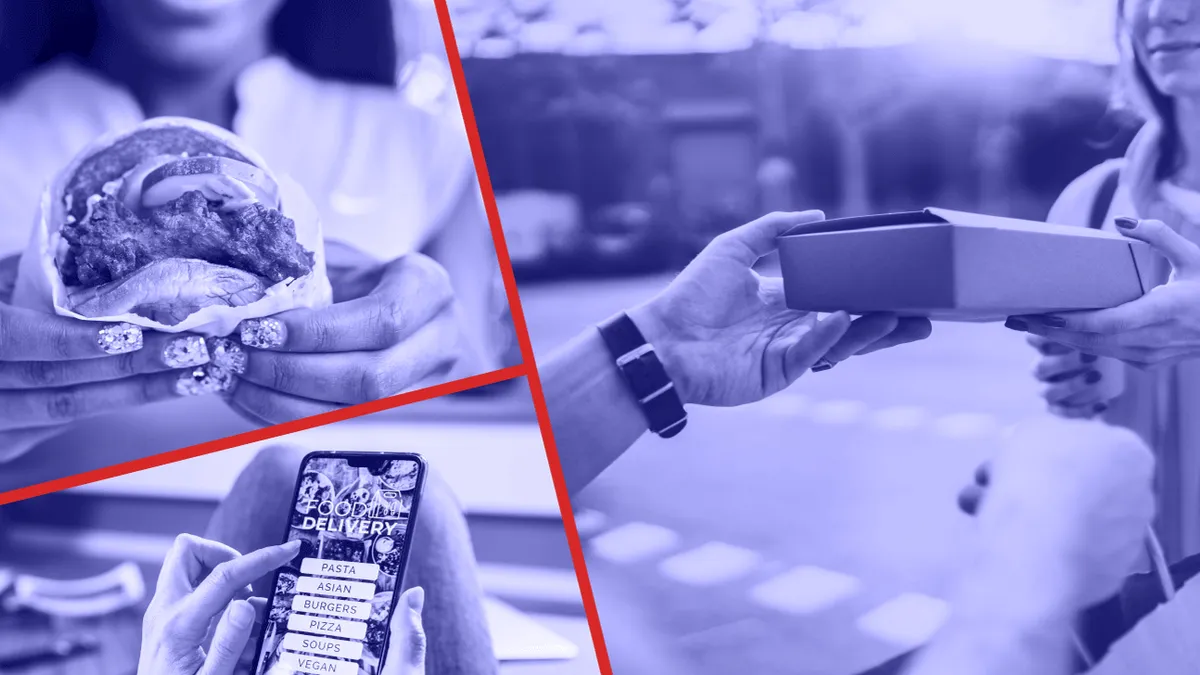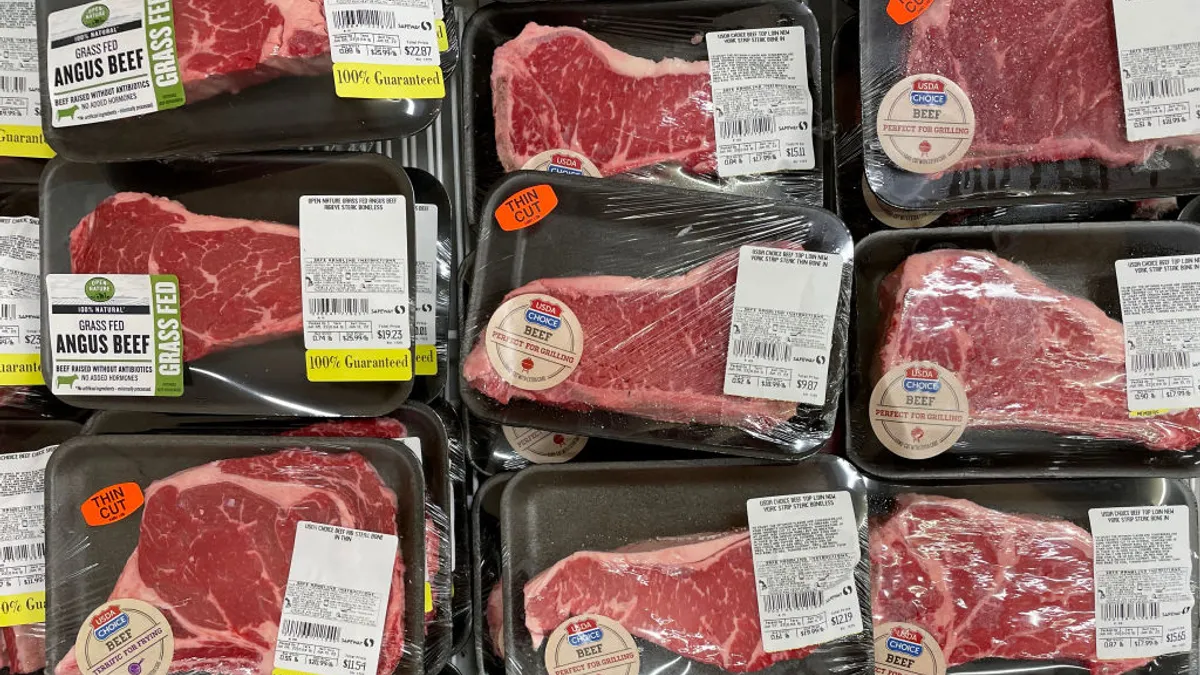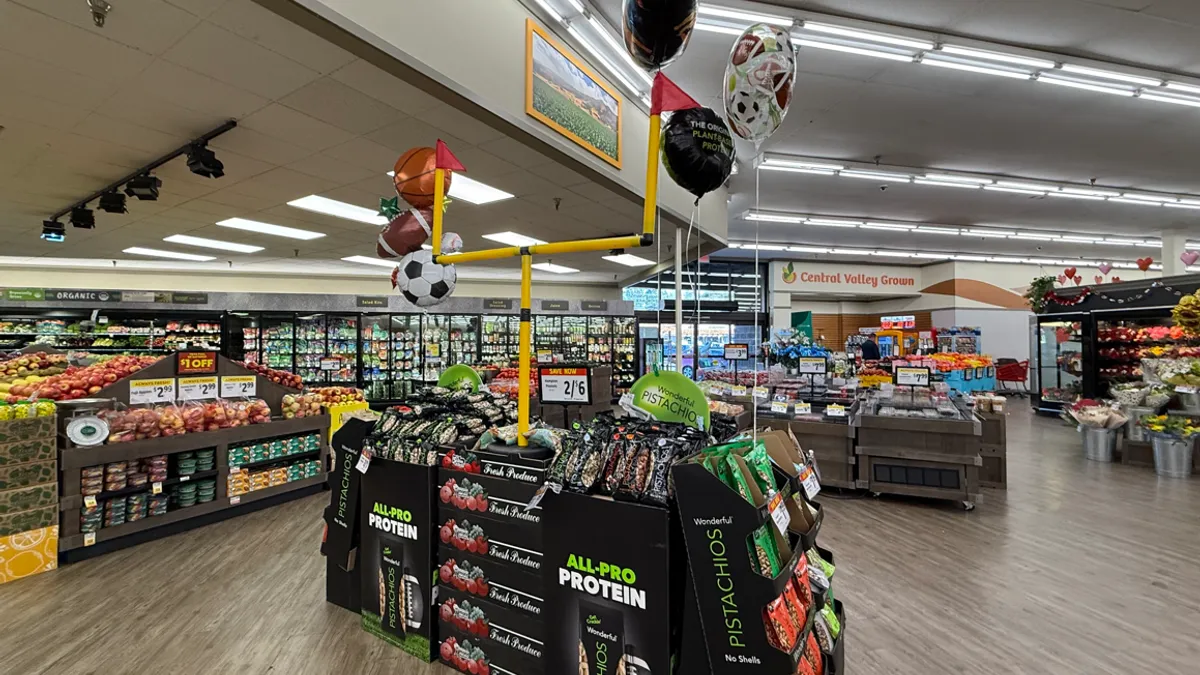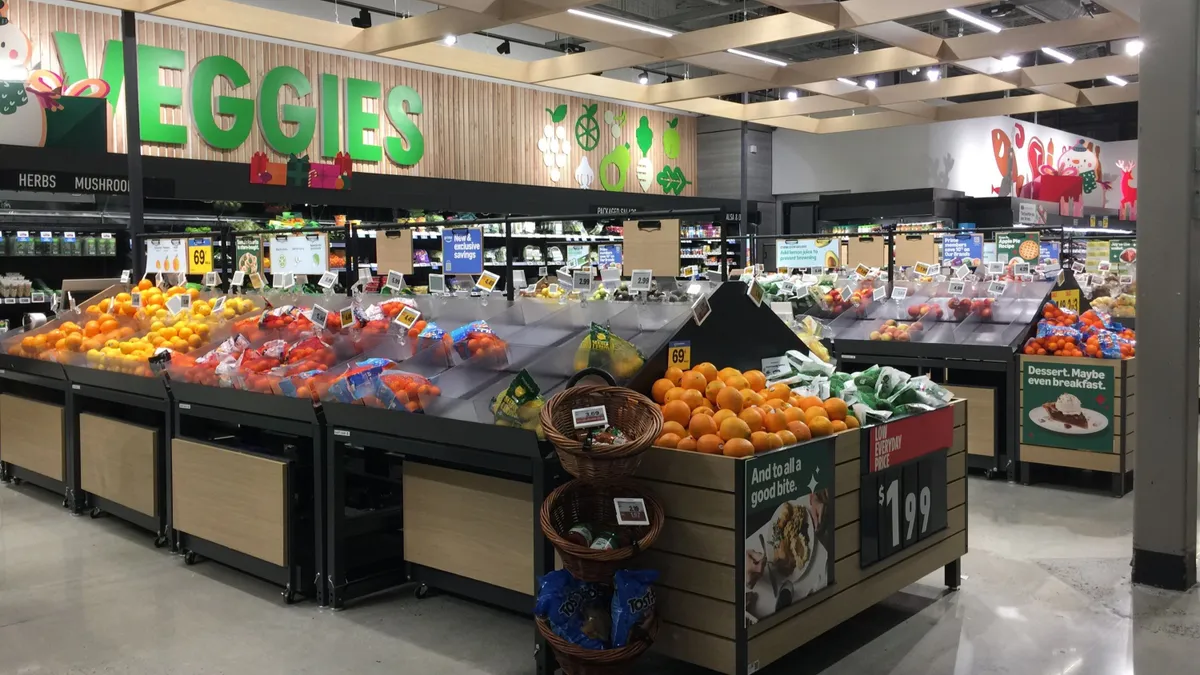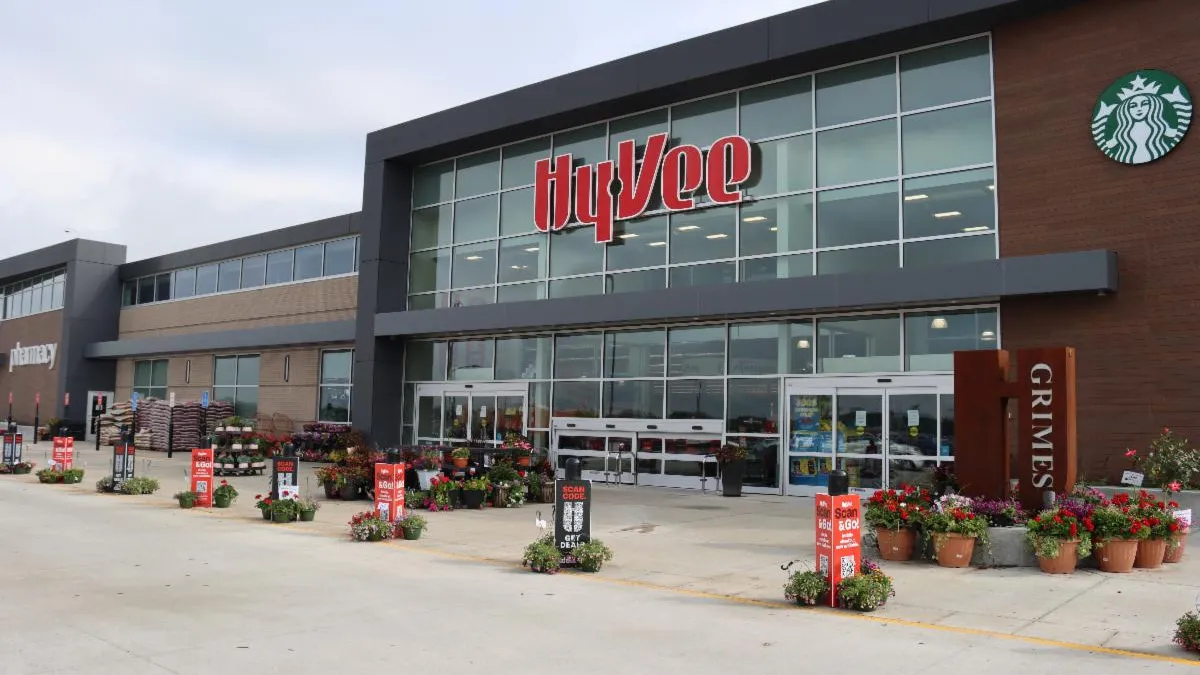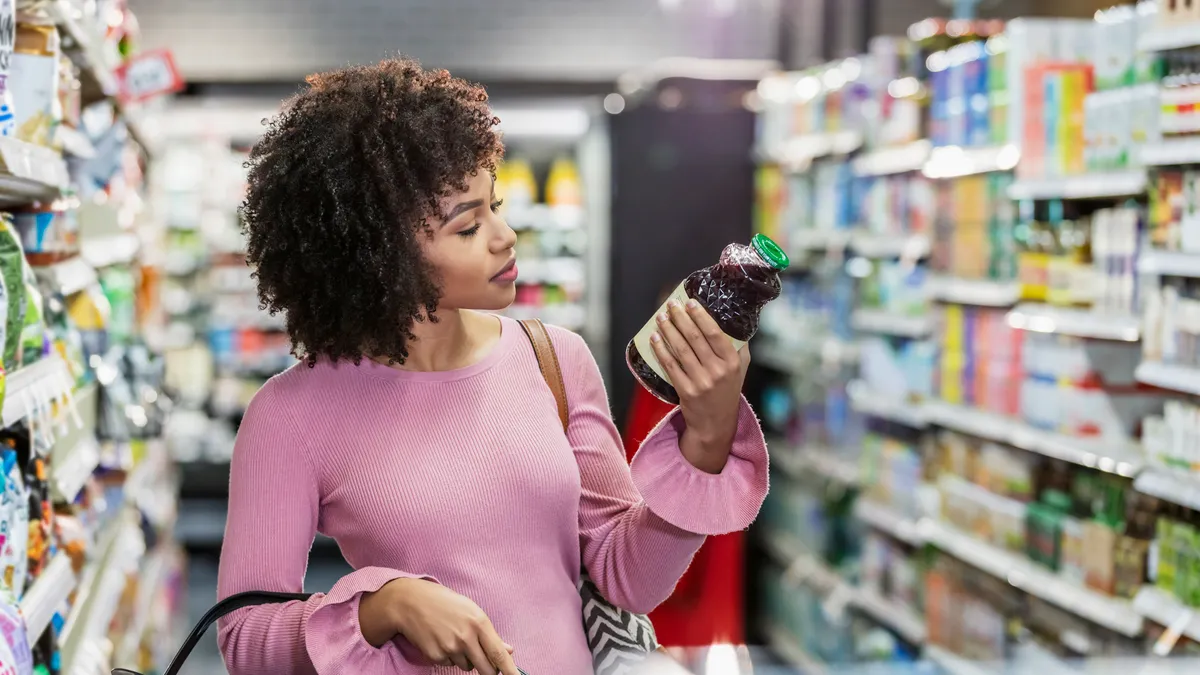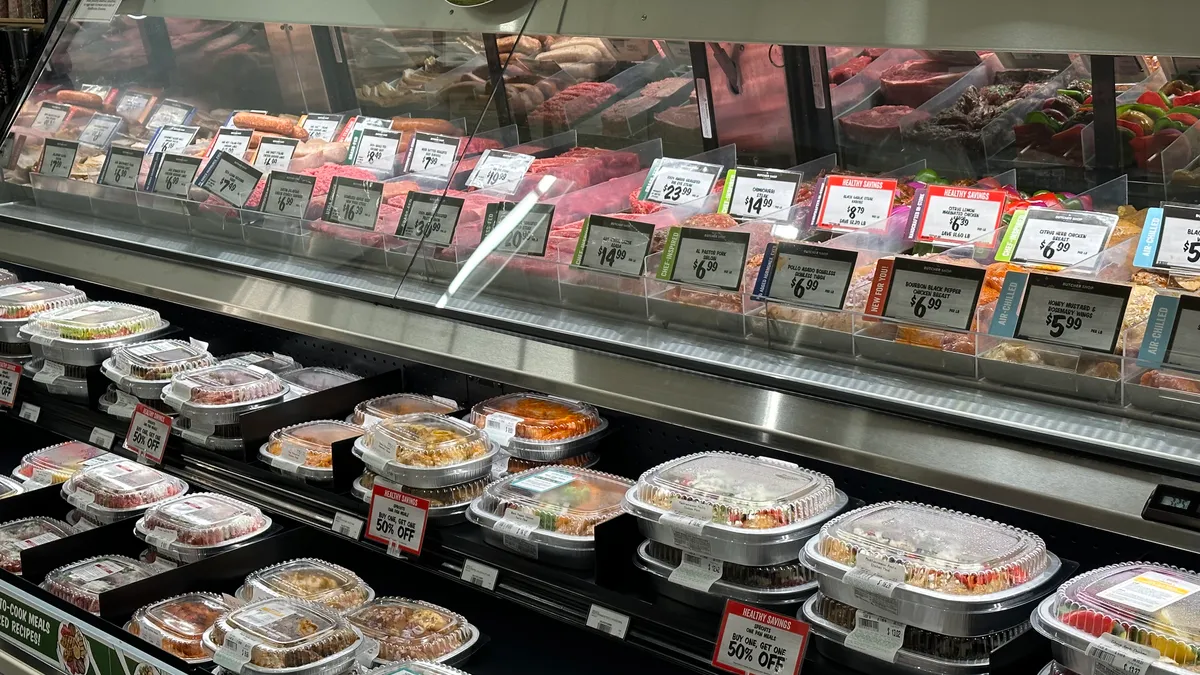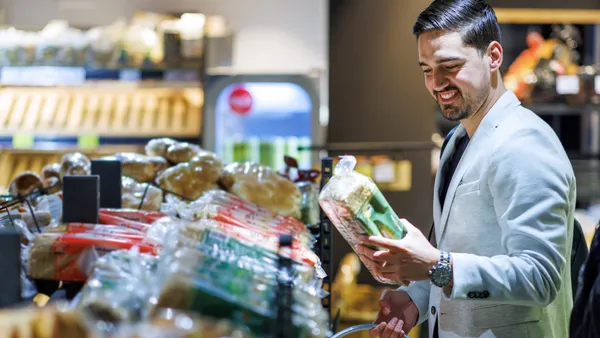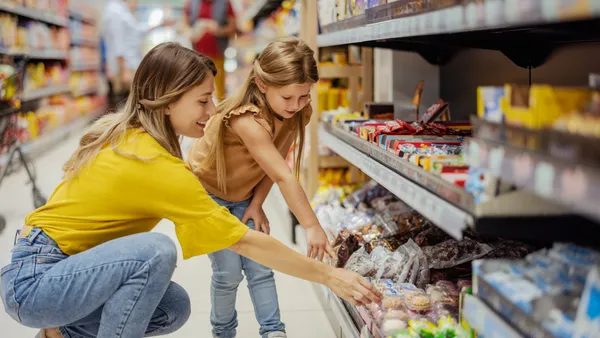In the war over mealtime dollars, grab-and-go has long been a differentiator for grocery stores. But restaurants are working hard to neutralize that advantage with premade hot and cold offerings that complement their made-to-order selections.
Following in the footsteps of chains like Starbucks, which offers yogurts and juices along with packaged wraps and sandwiches, restaurants like Newk's Eatery and Lemonade have added cases of sandwiches, salads and sides to their stores. Others have been testing the grab-and-go waters. Chick-Fil-A launched a meal-kit pilot last year, while Panera is piloting grab-and-go coffee that lets customers fill up, pay via the company's app and then get on their way. Panera also recently announced it will open airport locations in 2020 featuring grab-and-go versions of many of its classic offerings.
Limited-service outlets have also been on the rise in major cities. Pret A Manger, which has more than 450 locations globally, offers premade steel-cut oatmeal, breakfast wraps, sandwiches, salads, soups and baked goods, the retailer told Grocery Dive. The only products that take time to make are the coffee beverages the barista prepares.
In the past, restaurants avoided the grab-and-go business because it didn't allow them to upsell products like a side or an extra drink, but over time some have realized how important it is for customers who are pressed for time, John Connelly, vice president of innovation at food and beverage insight firm Mattson, told Grocery Dive. Restaurants run a risk of missing out on traffic from the rushed diner if it doesn't offer the option.
This shift in restaurant strategy could put even more pressure on grocers, experts say. Restaurants like Panera or Le Pain Quotidien are in the "crave-able" food business and are top-of-mind for consumers who want to grab a meal, said Peter Saleh, managing director and restaurant analyst at BTIG.
"If you're in that business, you're in the business of selling craves for whatever cuisine type you're known for. I do think that it is a threat [to grocers]," Saleh told Grocery Dive. "Because if you can stop by and pick something up that delivers on brand, taste, and hopefully health and wellness, then I think most people would elect to stop by a Panera versus pulling in to a King's Soopers in Denver or a Safeway in San Francisco."
Restaurants hit the grab-and-go sweet spot
Breakfast is one area where restaurants are trying to win with grab-and-go, said Barb Stuckey, president and chief innovation officer at Mattson. Many are already seen as morning destinations. Wrapped-up egg sandwiches and cups of yogurt parfait target customers looking for quick meals during the a.m. rush.
"If you can stop by and pick something up that delivers on brand, taste, and hopefully health and wellness, then I think most people would elect to stop by a Panera versus pulling in to a King’s Soopers in Denver or a Safeway in San Francisco."

Peter Saleh
Managing director and restaurant analyst, BTIG
Chains dedicated to the daypart, like Starbucks and Dunkin', have the biggest opportunity to target these customers, Stuckey said. In 2016, Dunkin' tested "Ready-to-Go" selections like subs and fruit-and-cheese platters at the front of the stores, and last year it showed off a store-of-the-future concept featuring kiosk ordering and a grab-and-go station. Eggs Up Grill, which has locations across the southeastern U.S., began testing a grab-and-go counter at a South Carolina location in June. The counter includes a coffee station, yogurt, fruit and premade sandwiches.
Meanwhile, fast casuals like Panera, Au Bon Pain and Pret often have many locations in busy metropolitan locations where offices are often located — perfect for the lunch crowd, Connelly explained. As lines start to pile up once noon strikes, grab-and-go is an appealing option.
As unemployment hits historic lows and wages increase, restaurants are struggling to staff checkout counters and kitchens, which puts pressure on customer service and food prep, Stuckey explained. She said that having grab-and-go offloads the preparation to a supplier, commissary or to non-peak hours.
"I think it's more about the ability to drive revenue and do that profitably or more profitably than having people stand in line because you need more labor," Connelly said.
In order to locate in bustling cities, restaurants have to be small and don't have a lot of square footage for kitchen equipment to make products from scratch, Saleh said. Grab-and-go allows them to offer a more extensive list of products and still compete against fast casuals like Panera or quick-service restaurants (QSRs) like McDonald's.
"It [grab-and-go] allows some operators to get into categories they're not in," said Connelly.
In Sacramento, California, popular Mexican restaurant Zocalo just launched a line of grab-and-go bowls and salads that will be available from the restaurant's website through DoorDash and from Raley's Market 5-One-5 urban format store downtown. Customers can also get grab-and-go bowls at the restaurant, where they're made-to-order and packaged on site.
Zocalo President Ryan Rose told Grocery Dive the concept was developed to offer customers convenience and to build on its bustling to-go business.
While venturing into grab-and-go foods follows industry trends, Zocalo's partnership with Market 5-One-5 is an innovative strategy. Rather than seeing the grocer as a competitor in the space, Zocalo is using the supermarket as a distribution channel — an idea that came from the grocer, Rose said.
"They were looking to enhance their selection in their market. They do an incredible business in food that's prepped and ready to go and they were looking to bring some variety," Rose said.
Zocalo's grab-and-go salads will retail for $8.99 and $9.99, while the bowls range from $9.99 for veggie, up to $12.99 for salmon. They are similar to the bowls available on the restaurant's dine-in menu and include a base of local brown rice, black beans, pickled veggies, baby kale and cilantro pesto, plus veggies or protein. The bowls are prepared fresh daily.
New models emerge in grab-and-go grocery
Grocery stores, long considered the experts in grab-and-go foods, aren't ready to cede any ground to restaurants.
Retailers have built out a wide assortment of ready-to-eat and ready-to-heat meals over the years. Festival Foods sells fresh meals for $5 to $6 that include a protein, starch and a vegetable. Kroger has placed meal kits and prepared foods from Home Chef, which it acquired last year, at the front of select stores. The Cincinnati-based retailer has also introduced stations with mix-and-match frozen entrees and sides to hundreds of locations.
New models for grab-and-go grocery are emerging, too. Digitally native corner store Foxtrot, which operates seven brick-and-mortar stores in Chicago and one in Dallas, embraces grab-and-go as a core piece of its convenience-focused model, said Ashley Alden, director of merchandising for Foxtrot.
"When you walk into one of our store locations, it feels like ... the hybrid of a coffee shop, a convenience store, a grocery store, and then the grab-and-go coolers obviously play a central role to what we do," Alden told Grocery Dive.
For the morning crowd, Foxtrot sets up grab-and-go breakfast tacos in a warmer in the coffee shop area, while overnight oats and breakfast parfaits are available in the stores' grab-and-go coolers. At lunchtime, customers can grab salads, sandwiches, wraps and chef-prepared entrees, Alden said.
Snacks and desserts also play a large role at the retailer, with housemade dips, bento boxes side salads and other snacks available. Foxtrot also works with local partners to stock its coolers with specialty desserts, like slices of pie from Bang Bang Pie in Chicago and single-serve ice cream from a local brand called Jeni's.
Because Foxtrot began as an e-commerce business, all grab-and-go items are also available for on-demand delivery through the app or website, Alden said.
"On-demand delivery is where we started and something that we continue to put a lot of effort toward for our customers," Alden said.
Another priority for Foxtrot is to stay on-trend with its food offerings. New to the store's menu is Impossible Chili made with plant-based product from Impossible. The company is also making its overnight oats with oat milk, which Alden said is trending right now. Foxtrot's menu is updated seasonally.
When it comes to retail foodservice, grab-and-go, ready-to-eat items are of interest to 68% of shoppers, according to FMI's Power of Foodservice report. Grab-and-go, heat-and-eat items are the second most popular at 63%. Grab-and-go food is more popular than hot and cold buffets, made-to-order food stations and restaurant-style seating, the report found.
Additionally, grab-and-go is important across mealtimes, and particularly during the lunch hour, said Rick Stein, vice president of fresh foods for FMI.
"Our consumers said that if they can't make a decision, get in and out within 15 minutes, you have not met their needs for lunch," he told Grocery Dive. "And that means from the minute they're trying to make the decision to the minute they've left, you've got to figure out a way to prepare it, serve it to them and get [them] out. And so grab-and-go meets that need."
What can they learn from each other?
As restaurants look to enter the grab-and-go space, they may look at grocery stores as competitors — or as examples of how to do grab-and-go well.
Given how different grab-and-go operations can be from typical restaurant operations, however, Stein questions whether restaurants can truly succeed in the segment. He said he could see some small restaurants do it, or fast-casual spots like Chipotle. But it wouldn't be for everyone, he said.
According to Alden, Foxtrot is finding success at the intersection of seasonal, fresh ingredients and high quality standards. The company has seen sales of its chef-prepared, grab-and-go meals triple over the last year.
"We kind of are more curated in the menu that we put together for our customers, which restaurants can definitely learn from, but you still have that convenience factor, meaning it's really easy for our customers to get those higher-quality products and still be in and out of our store in less than five minutes," Alden said.
Alden said that while a typical convenience store may just have a traditional turkey sandwich, Foxtrot goes a step above with turkey, cranberry and brie, or instead of a typical salad, the stores have a shaved Brussels sprouts salad.
"I think combining high-quality, on-trend ingredients, seasonal updates with the ease of buying and shopping is where we're winning right now."

Ashley Alden
Director of merchandising, Foxtrot
"I think combining high-quality, on-trend ingredients, seasonal updates with the ease of buying and shopping is where we're winning right now," Alden said.
Grocers can learn a thing or two from restaurants as well. They should think about reformatting their stores, Stuckey said. She thinks that grocers could include grab-and-go items closer to the entrance of the store to try and take the place of impulse buys at the register. Connelly recommends more grocers place their grab-and-go sections near the self-checkout aisles for even quicker service.
Connelly pointed to Hy-Vee's small-format HealthMarket and Fast & Fresh locations as examples of stores where grab-and-go can thrive. Fast & Fresh is meant to serve busy customers who need convenient groceries and a meal experience. The store features Hy-Vee Shortcuts, which are pre-cut and washed fruits, vegetables, snacks and read to eat items. It also offers on-the-go meals.
Amazon Go is another retailer with a format that's tailor made for grab-and-go, Connelly said. The stores, which tracks customers' using computer-vision technology and charges them automatically for the items they select, carry a wide selection of fresh food, drinks and meal kits.
"If Amazon sees an opportunity in grab-and-go with their big data and their understanding of retailing sees this opportunity, I would expect that there is something there that retailers should be looking into," he said.




